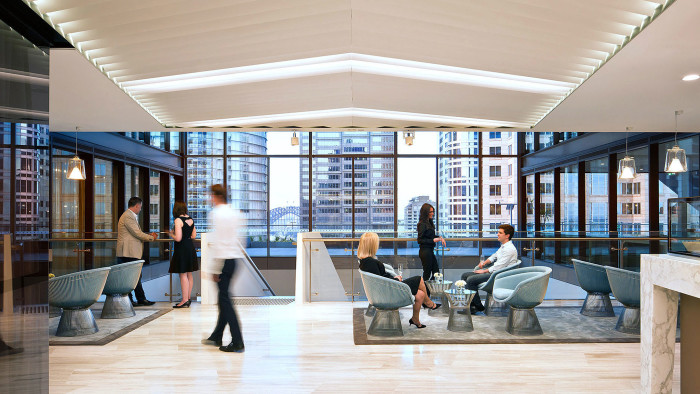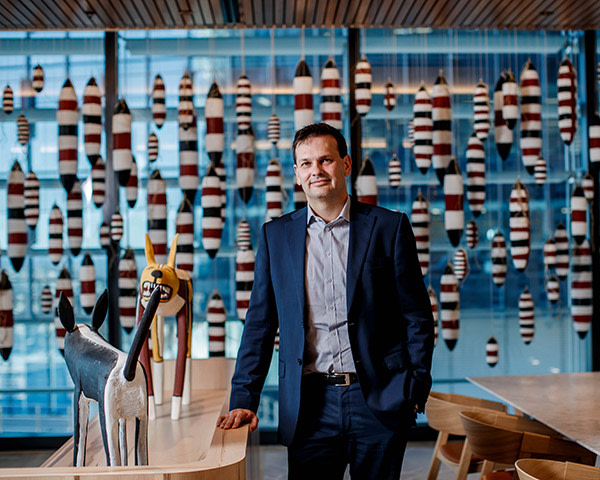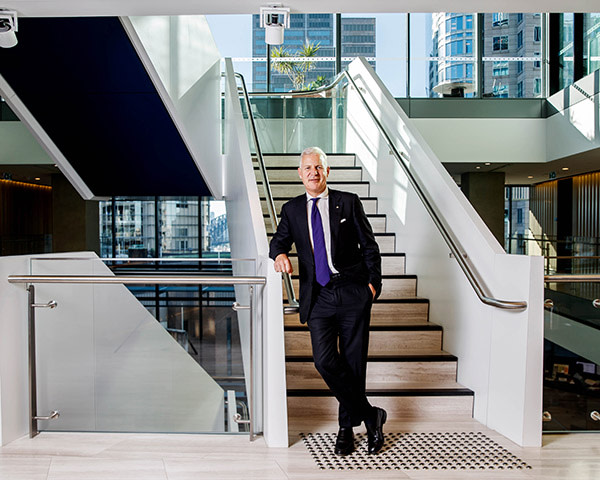Australian law firms – up from Down Under

Roula Khalaf, Editor of the FT, selects her favourite stories in this weekly newsletter.
Learning how to code is becoming a normal part of the job for lawyers at Gilbert + Tobin, the Sydney-based corporate law firm. The idea is that by acquiring this skill, lawyers will become more tech-literate and will develop a feel for how technology can help them work more efficiently.
“This has caused controversy,” says Sam Nickless, G+T’s chief operating officer. “Some people from other law firms have criticised our coding programme, saying it’s ridiculous to teach lawyers to code.
“But this misses the point. This isn’t designed to teach lawyers to be coders but to help them understand the power of coding, inspire them with ideas and enable them to ask our tech experts to work on projects.”
G+T is also sponsoring a new course at the University of New South Wales, which gives law students practical experience of the latest legal technology and systems.
Australia is one of the world’s most competitive legal markets, with lots of lawyers in a limited domestic economy. This has spurred legal practitioners to embrace new technology, business practices and ways of working in an attempt to outpace rivals at home and, increasingly, in the wider region and beyond.
In G+T’s case, the firm has developed software tools that streamline and automate some of the most time-consuming and repetitive legal tasks related to corporate transactions, including searching databases and verifying documentation. Last year it patented some of these innovations and it has begun sharing its know-how with clients.

In February G+T lawyers took part in a hackathon with Westpac Banking Corporation to develop and test inventive responses to legal challenges identified by the bank’s in-house counsel. “This enables us to charge clients less for our overall work and it frees up lawyers from time-consuming tasks,” says Mr Nickless, as he pulls out his mobile phone to demonstrate G+T’s Smart Counsel app, which provides tips and draft clauses for corporate legal teams.
Mr Nickless is sitting beside Danny Gilbert, co-founder and managing partner of G+T, in the firm’s new offices in Sydney’s high rise Barangaroo, with stunning views of the city’s harbour skyline. G+T has worked hard to challenge Australia’s longer established law firms such as 150-year-old Allens. “We need to keep innovating to stay on top of the competition,” says Mr Gilbert, who cites G+T’s egalitarian culture and communication as key strengths.
Many Australian law firms are emerging as some of the most innovative in the Asia-Pacific region and arguably ahead of leading US and UK firms. Not only are these Australian trail blazers embracing the latest developments in technology but they are reforming traditional work practices.
MinterEllison, another law firm based in Sydney, is providing opportunities for lawyers seeking work on a contractual and temporary basis. Last year it set up MinterEllison Flex, which enables clients to hire contract lawyers to work in-house to boost their own legal capacity.

“Australian law firms have always been forced to be more efficient and innovative than their international counterparts because there are a lot of large firms in a market which is not that deep,” says John Denton, chief executive at Corrs Chambers Westgarth. “[Also] the Australian market has typically been a place where global law firms want to have a footprint.”
In recent years there has been a rash of mergers between Australian firms and UK counterparts, such as the takeover by the UK’s Ashurst of Blake Dawson in 2012 and the combination of Australia’s Freehills and the UK’s Herbert Smith also in 2012. Other big international law firms, such as White & Case, have set out to poach local staff from Australian rivals to establish a presence Down Under.
“Australian law firms are in a competitive market, not only among each other, but with Singapore and Hong Kong for the Asian market,” says John Flood, professor of law at Griffith University in Queensland. “This is why a number of them have linked with London firms as they don’t have the substantial corporate and banking bases that New York and London do.”
One of the first big international mergers was between the Australian firm Mallesons, and China’s King & Wood in 2012. Its subsequent expansion into Europe was ill-fated. But for other firms, any concerns that the Australians would become subservient to global partners proved wide of the mark. Ashurst and Herbert Smith Freehills, for example, are both led by partners from the Australian firms — Paul Jenkins and Mark Rigotti respectively. Mr Jenkins, managing partner at Ashurst, remains based in Australia.
Mr Denton, chief executive at Corrs, is also co-chair of the finance and infrastructure task force of the B20, a business group that meets alongside the political leaders of G20 nations. He notes that while lawyers must grasp technology, he continues to spend a lot of time on a plane to meet clients and represent the firm overseas. “While technology has certainly brought about an incredible amount of efficiencies, helping clients to see around corners often requires in-person contact and being part of the conversation on the ground,” he says.
Fierce competition between firms has made attracting and retaining the best legal talent critically important, and prompted many firms to reform traditional work practices and embrace change. Corrs has introduced completely open plan offices for its 600 lawyers in its Australia offices to increase collaboration, encourage teamwork between different parts of the firm and enable more flexible-working opportunities. “By focusing on more flexibility we have been able to attract and retain more women,” says Mr Denton.
The drive for innovation and efficiency is causing traditional boundaries between legal and professional services firms to break down, which presents opportunities for law firms but also threats from new entrants to the sector.
Justin North, founder and director of Janders Dean, a consultancy that advises the legal industry, says the Big Four accountancy firms pose some of the greatest competitive threats to law firms. “It is not just [the Big Four’s] headcount growth that should concern traditional law firms, but also the scope of legal capabilities, from tax disputes to M&A, and their depth of alternative offerings and consulting approach.”
MinterEllison has responded by turning the tables. In 2014 it chose a non-lawyer — Tony Harrington, a former head of consultancy firm PwC Australia and managing partner at investment bank Moelis & Co — as its chief executive.
Nevertheless, the smaller size of Australia’s law firms — none is among the global top 20 — enables them to be nimbler than larger US and UK traditional rivals or the big professional services firms. They are embracing innovation and getting closer to clients to better understand what they need and what extra services they can offer them, says Mr North.
Comments